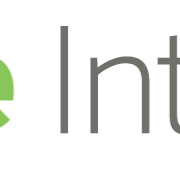Closing the Automation Gap in Finance
To many CFOs, change is coming. Whether this change comes from the board, from customers, or from finance and executives teams, many are in the midst of a new revolution in how finance works. And no change is more drastic than the change in technology. Automation through cloud ERP systems gives greater productivity to those who take advantage. But for the rest, the automation gap is growing. The key is to find out why the gap exists, how tech impacts your business as a whole, and how you can catch up to your company’s growth goals.
The Trouble with Spreadsheets
As your company grows, are you seeing an increase in the number of spreadsheets you work with? Most CFOs are seeing that. Spreadsheets are everywhere, which increases the manual accounting demands. Demands for new reporting increases, so the time to produce these reports is increasing. In an Adra Match survey, 90% of CFOs were under pressure to close books faster. To that end, only a third of CEOs even trust this data in the first place. This kind of pressure widens the gulf between the supply and demand of decision-making insights.
But there are problems with spreadsheets. All data shows that errors in spreadsheets are not a question of “if” but rather “when.” How could they not be? Spreadsheets generally need to be backed up manually, they have insecure and difficult to enforce controls when editing, they keep no audit of changes, and often a single employee has total control. Even the most casual spreadsheet user can spend one day a month purely on spreadsheet maintenance. (Want to see the impact of spreadsheet errors? Goldman Sachs lost $100 million for a single error.)
The point being, spreadsheet accounting is not your best bet when planning future growth.
Why is the Gap Growing?
With the increasing importance of growth as a valuation driver, many CFOs are facing a substantial increase in data insights. Is your business looking into diversification with new services, geographic expansion, subscription models, mergers and acquisitions? Any one of these could greatly impact your task load.
Say you’re expanding with an overseas office. What kind of challenges does that put on your financial data reporting? You need to integrate new locations (COA, lists, workflows, periods). You face intercompany eliminations and disparate data sources, spreadsheet rollups, complex ownership structures, currency conversions, local and consolidated reporting, FX gains and losses. How does this affect your team’s performance? Many CFOs find themselves searching for new talent to come about to delegate the workflow.
Creating a subscription model? Billing and accounting complexity goes through the roof.
These are just a few of the significant roadblocks that could impact a workload that, as we’ve seen from the Adra Match survey, is already heavily pressured.
Automation with Cloud ERP
The demand for a faster close will not go away, that much is true. But the answer is not necessarily adding more spreadsheets, and more staff to manage them.
With cloud ERP, you begin to automate many procedures that allow you to grow without having to hire. Cloud ERP with Sage Intacct and Alta Vista gives you:
- Automated consolidations, currency conversions, intercompany eliminations
- Automated revenue recognition
- Automated allocations and accruals for expenses
- Automated entries for depreciation, amortization and adjustments
- Plus, visibility into growth of deferred revenues
It’s an exciting new world for CFOs when automation gives you greater insight, visibility and accountability, while cutting down on your workload.
Learn more: Artificial Intelligence Driving the CFO of Tomorrow with Sage Intacct
Contact Alta Vista today learn how automation with cloud ERP can help transform your business.
Check out Sage Intacct’s webinar: The Tech-Savvy CFO – Closing the Automation Gap in Finance











